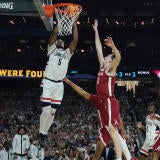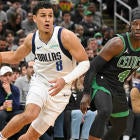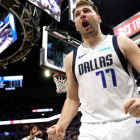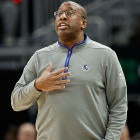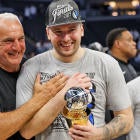The two greatest teams in the history of international basketball are Team USA's 1992 "Dream Team" and the 2008 "Redeem Team." What do those squads have in common? They were built on the back of painful, humiliating losses. The 1988 team failed to reach the gold medal game for the first time in history, so NBA players ensured that 1992 would not feature a repeat performance. Meanwhile, the 2004 group was the first American team built with NBA players to lose the gold medal in the Olympics, making the "Redeem Team" moniker of 2008 fairly self-explanatory.
The definition of insanity is doing the same thing over and over again and expecting different results, but that is exactly how USA Basketball operates. It loses, it builds a new superteam, it dominates, interest fades, and it loses again. It happens like clockwork. It took 14 years, from 1988 to 2002, for Team USA to lose another major international competition after the embarrassment of its first bronze medal. Team USA's back-to-back World Cup losses to France and Serbia came 15 years after 2004's debacle, and 13 years after the oft-forgotten loss at the 2006 World Championships. The half-life of an American dynasty, historically speaking, is around a decade and a half.
That shouldn't be the case. Team USA has the best players, the best coaches and the most resources. Given similar structure and investment, those factors should ensure gold at any international competition the United States enters.
But it hasn't, because foreign teams have several significant advantages over American teams. Just look at the French team that beat them Wednesday. Vincent Collet has been France's head coach since 2009. Rudy Gobert and Evan Fournier have played for the national team since the 2014 World Cup. Nicolas Batum was on the 2010 World Cup team. Most of this roster has been together for quite some time. Team USA has never been able to match that continuity, and frankly, it has never tried.
That should change after suffering an embarrassing elimination in China. Team USA needs to adopt stricter roster-building guidelines if it ever plans to build the sort of chemistry most foreign teams have. It can do so by following this three-step plan.
Step 1: Insist on a four-year commitment
Team USA will never draw the life-long commitments that players like Tony Parker and Pau Gasol gave their country, but it can do better than the friends with benefits arrangement it seems to have with the NBA's best players. In 2015, for instance, USA Basketball Managing Director Jerry Colangelo told Marc Stein that he would hold a roster spot for LeBron James in case he decided to play. James, and many of top American players, have that sort of leverage. They can hold Team USA hostage and play only on their own terms.
There is no way to end this entirely, but a mandatory four-year commitment could mitigate it. The terms would be simple: a player would only be eligible for a roster spot on the American senior men's national team at the Olympics if that player participated in two summer's worth of training camps and the FIBA World Cup in the three years preceding the Olympic Games. Essentially, Team USA would build its roster in the first offseason following the Olympics, host training camps in two of the three summers without a major international competition, and then take a roster with experience playing together into both the World Cup and the Olympics.
Making these commitments mandatory would solve a number of problems for Team USA. It would destroy the attitude that only the Olympics are worth playing in, ensuring that Team USA puts its best foot forward in all major competition. It would obviously improve chemistry by forcing the team to play together several summers in a row. It would even help fans feel a stronger connection to the team, as the roster would have some degree of stability.
Specific rules would have to be made regarding injuries, but a dropout without a satisfactory explanation would be final. If a player decides against coming to a training camp as a load-management precaution, then that player would lose eligibility for the following Olympics. His spot on the roster would then be filled by a member of the Select Team, which would commit to two-year terms with the promise of potentially replacing departed players.
Step 2: Institute term limits
This one might seem counterproductive. This new world would include mandatory four-year commitments, but it would also carry term limits. Once a player has played in the Olympics once, he would officially lose eligibility to participate ever again.
Yes, this seems counter-intuitive if the goal is building team cohesion, but it serves a critical function. The first is that it aids in recruiting. Patriotism loses its novelty over time, but if a player knows that he can represent his country only once, he is likely to take the role more seriously. It also helps quell the fears of NBA teams who would likely prefer not to let their players play internationally, and most importantly, it makes playing more appealing to the players themselves.
Draymond Green played only 9.8 minutes per game on the 2016 Olympic Team. Jimmy Butler played 14.4 minutes. Neither started even once. They were blocked at the forward spots by two-time Olympian Kevin Durant and four-time Olympian Carmelo Anthony. Neither Green nor Butler played in the World Cup this year despite being seemingly healthy enough to do so.
Only allowing a player to play once cycles stars out of the system quickly enough for new stars to take their place. Superstars don't want to sit on the bench. The idea of watching James and Durant win gold medals from the sideline probably doesn't hold much appeal for, say, the 20th best player in the world.
There would not need to be term limits for the Select Team, which would ideally serve as a farm system for the senior squad. Spend two years practicing against them, and then, when the cycle ends, get your turn. This not only incentivizes Select Team participation, but helps chemistry even more by bringing players into the fold who have already been a part of the system in some capacity.
Step 3: Set an age cap at 27
While there were a multitude of factors keeping top players off of Team USA this summer, the biggest by far was injury prevention. Setting an age cap would not be a perfect solution to that problem, but it would weed out many of the players in more desperate need of rest. Theoretically, younger players should be healthier than older ones.
They should also be more eager to benefit from the Team USA experience. Setting the age limit also cuts the player pool down enough to encourage participation under the same logic that having fewer superstars would. Not only is it easier to find playing time on a roster filled mostly with young players, but it allows those young players to bet on themselves in conjunction with our new, mandatory four-year commitments. Perhaps a 21-year-old player isn't worthy of a starting spot in his first training camp with Team USA, but he can assume he will improve quite a bit before he turns 24 and the Olympics come.
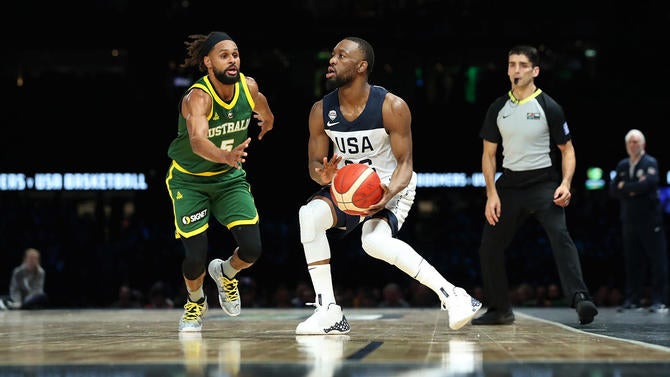
Brian Windhorst of ESPN suggested that both Trae Young and De'Aaron Fox left Team USA before the World Cup at least in part due to the fear of losing playing time to Derrick White. But in a world in which 31-year-old Kemba Walker was not on the team, perhaps there could have been room for all of them. In a four-year window, Young and Fox could feel more comfortable in their long-term ability to beat out White for playing time.
This would be unfortunate for late bloomers like Walker, but it would be in service of the team's greater goals. When older players block younger players, it leaves the team barren when those older players stop playing. Sure enough, Harrison Barnes is the only 2016 Olympian to have played for Team USA's 2019 World Cup team, and he played the fewest minutes of any American at the Olympics.
So why 27 as the line of demarcation? Because typically, the NBA's best players enter the league at the age of 19. Setting the barrier at 27 ensures that such players have at least two full cycles to potentially join the program.
These measures aren't perfect. Nothing can replace patriotism on the international stage, and at the end of the day, winning the World Cu, and even the Olympics simply means more to most foreign players than it does to Americans. But that does not excuse the structural flaws that have handicapped this program on several occasions. Winning most of the time is Team USA's excuse for not winning all of the time. It could win all of the time. It just needs to be stricter about how it builds its teams.











